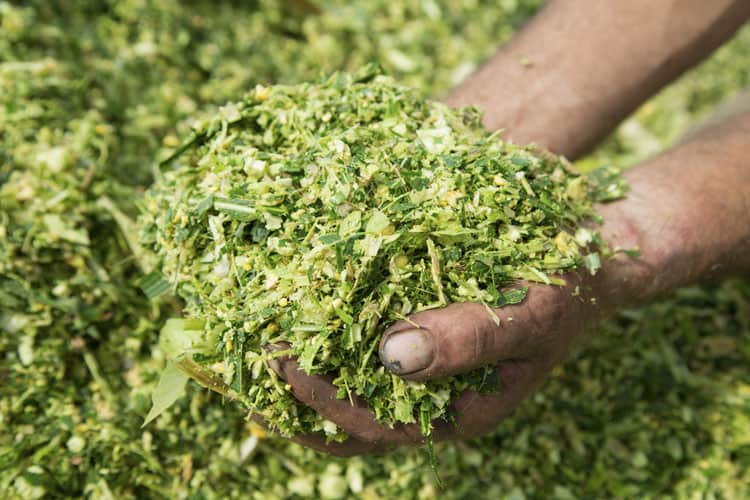Silage is a type of animal fodder which is used by dairy farmers across the globe. Silage is fed to different types of cattle such as sheep, goat, cows, and buffaloes. In a country that has the largest cattle inventory in the world, silage making is a vital part of the dairy farming process.
In this article, we will talk about everything you need to know about silage making:
Crops suitable for silage making in India
In the Indian context, according to the National Dairy Development Board (NDDB), fodder crops that are suitable for silage making are:
- Maize
- Sorghum
- Pearl Miller
- Hybrid Napier
What do you need for silage making?
- A quality crop in the first place ideal for making silage.
- You would need appropriate farm machinery such as tractors, silage baling machines etc.. for mass production.
- You would need a silo or a trench for storing the silage that has been prepared.
- It is also important to understand, the quality of silage preparation can be improved significantly with the help of additives such as molasses, urea, salt and formic acid.
- It is estimated by NDDB, that production of 100MT of green fodder would cost about 12 lakh INR in machinery investment. ( Refer Cornext Silage Balers)
Different types of silages
In general, the common classification under which the silages are separated are:
- High-moisture silage (less than 30% dry matter)
- Medium-moisture silage (30 – 40% dry matter)
- Low-moisture silage ( < 30% dry matter )
Silage Making Process: The pasture is cut when the grasses contain the highest nutrient levels. This level is attained just before they are fully mature. The reason why it is cut just before they are fully mature is that all forms of preserved grass, such as hay and silage, will have lower amounts of nutrients than fresh pasture, so everything must be done to make the end product as nutritious as possible.
The grass is allowed to wilt in the field for a few hours to reduce the moisture content to around 60-75% as this is the optimum level. If the grass is left out longer, it may get too dry, or it may get rained on – and both these will reduce the efficiency of the fermentation.
Fermentation Process
During the fermentation process, the cut grass is chopped into even smaller pieces (0.5 inches or 1.3 cms) and then compressed to eject the oxygen more efficiently. This is important because the microorganisms especially, lactic acid bacteria, grow best under anaerobic (oxygen-free) conditions.
When oxygen remains, plant enzymes and other bacteria react with the plant sugars and proteins to make energy, thus reducing the amount of nutrients in the final product.
Storage of Silage
After the first two steps, the next step is to seal the compressed grass with plastic to keep oxygen out. Mounds of silage are covered with huge polythene (plastic) sheets and weighted down (usually with old tires) to ensure maximum compression. Bales, on the other hand, are just covered with plastic wrapping.
In cases where the silage is to be stored in a large pit, tractors and other machinery are usually driven over the grass pile until it is firm. If the silage is stored as bales, baling machines will be used to compress the grass.
Preserving Technique
After the fermentation process is done and once all of the oxygen is used up, lactic acid bacteria start to multiply. These are the bacteria that are needed to make the silage. They play a key role in turning the plant sugars into lactic acid causing the pH to drop (mixture becomes more acidic). Once the pH is around 4-5, the sugars stop breaking down and the grass is preserved until the silage is opened and exposed to oxygen.
If the pH isn’t low enough, a different kind of bacteria will start fermenting the silage, producing by-products (like ammonia) that taste bad to cows and sheep. Thus, the latter situation needs to be avoided
at all costs.
Why Cornext?
At Cornext, one of the best corn silage suppliers in India offers corn silage bales all 365 days & baling services to large dairy farms as well as farmers who can identify the maize crop for silaging. Specialising in harvesting and baling process, we work best with farmers by sending in a team of experts who will come to your farm, harvest the crop and pack it in the best possible conditions.
Cornext is a new age company focussed on supplying high quality silage & Baling machines in India . Started by young entrepreneurs in 2012, we aim to transform our firm into India’s best corn silage suppliers in India. In a country where the majority practices farming, we aim to revolutionise the sector via our indigenous methods. Want to know more? Check us out now!


